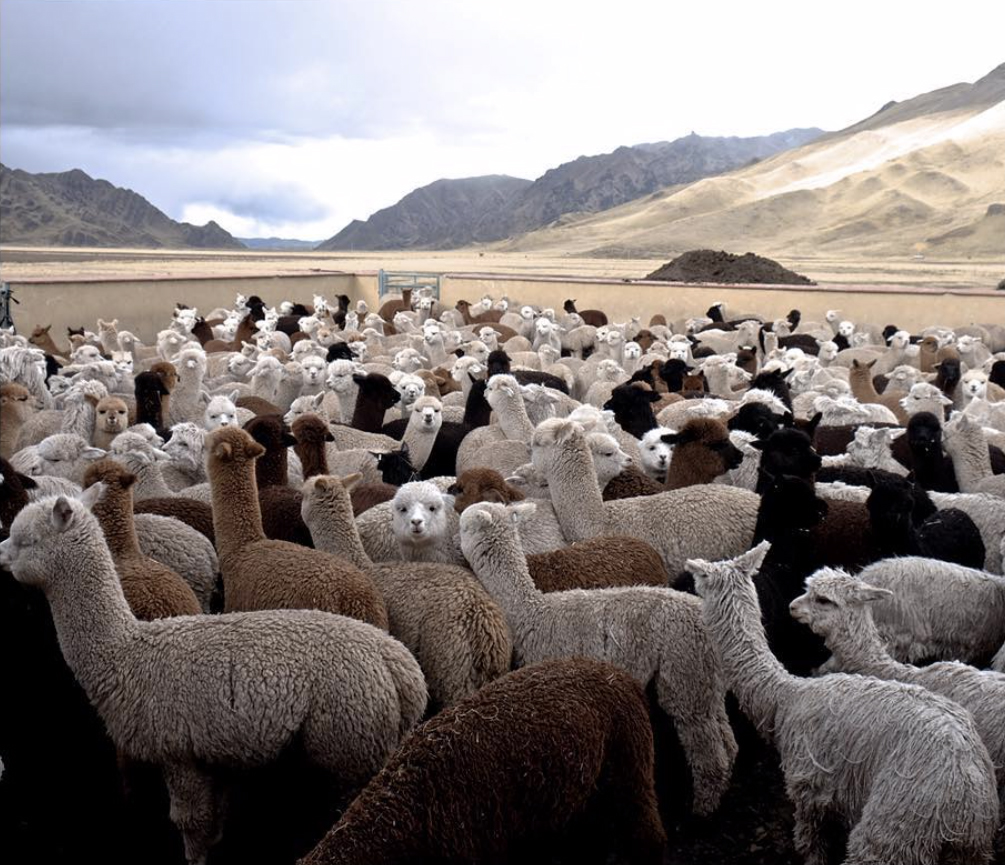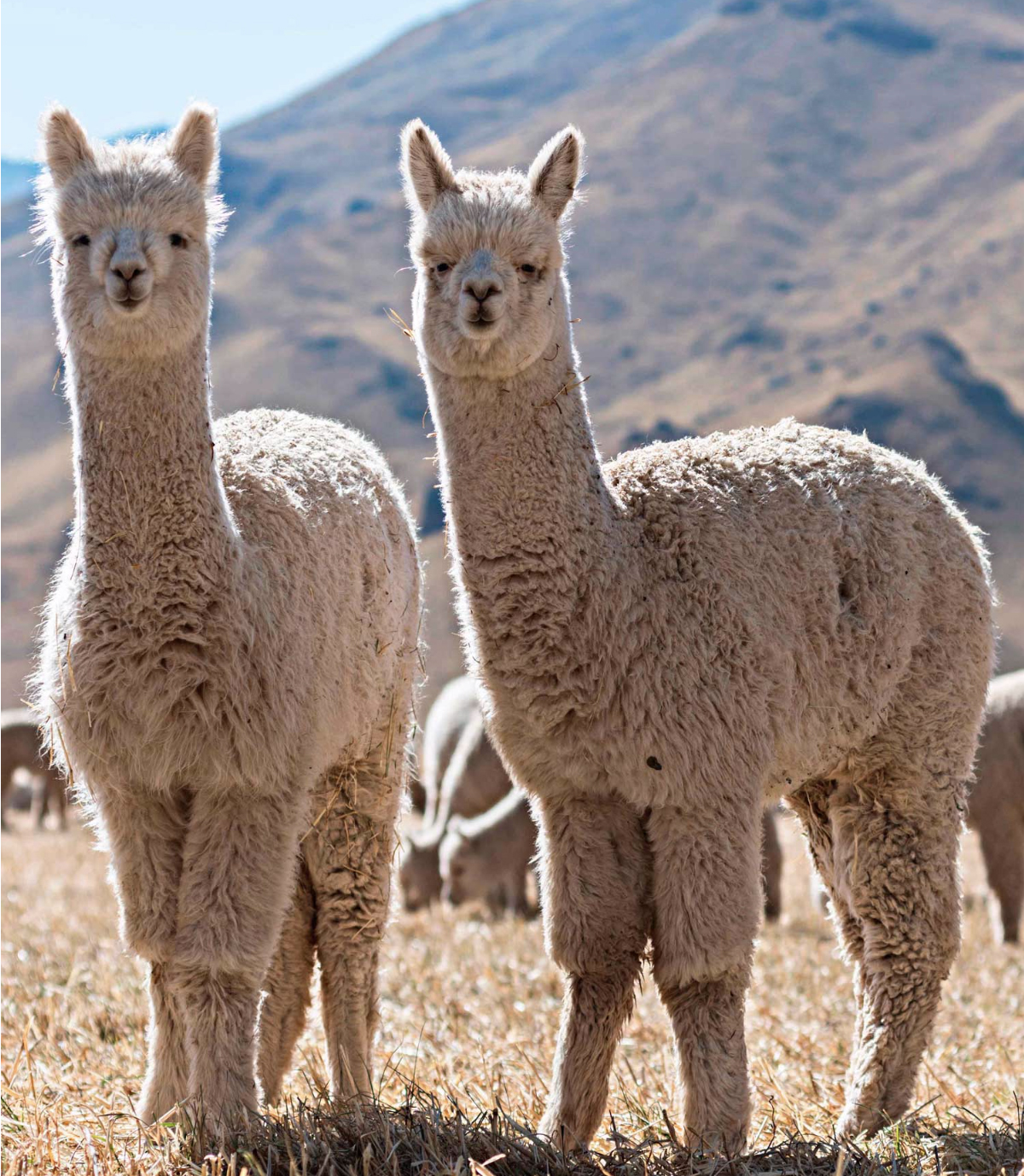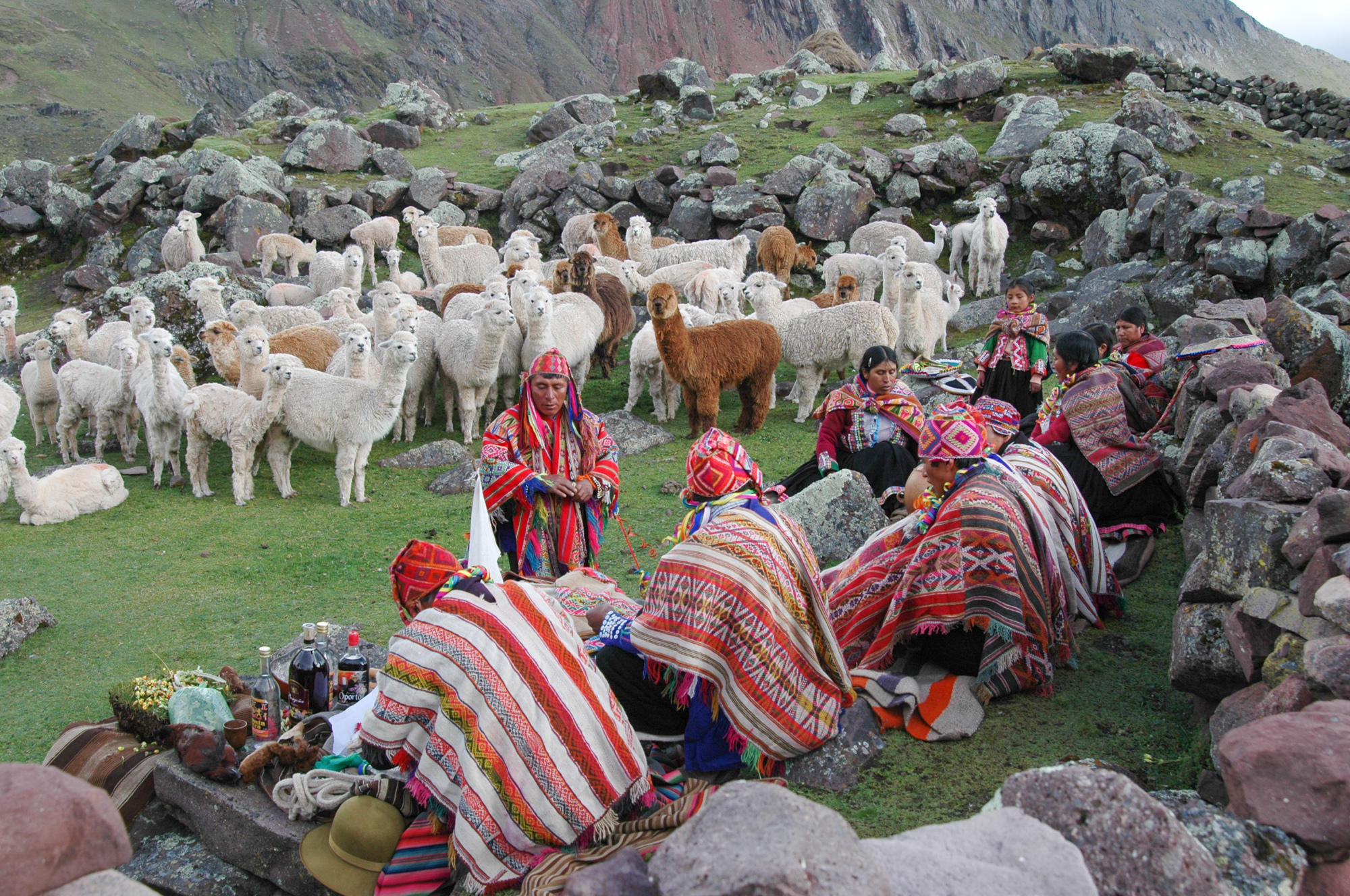
Craftsmanship
The Alpaca Project
We take great pride in our first-rate knitwear, ethically crafted in a small family-owned workshop with unmatched attention to detail and care, using only the finest materials. Modern essentials made with an artisanal level of craftsmanship. What we do is possible thanks to an amazing network of trusted partners, who are also focused on delivering sustainability and traceability.
The alpaca fiber has been part of a long and unfair supply chain. Underprivileged small-scale farmers (herders) in remote areas of the Peruvian Andes sold their fiber at informal markets in nearby towns to middlemen. These traders sold the fiber to larger distributors, and these in turn sold the fiber to the textile companies.
We have partnered with suppliers that have created a sustainable alpaca network working directly with these small scale farmers, taking out the middle men, significantly improving the quality of the alpaca, but more importantly, improving the life of the farmers.
Through many programs, our partners have direct contact with the families that depend on the alpaca as their main source of income. This contact is invaluable to assure the sustainability and traceability of the alpaca supply chain and a better livelihood for the communities.
Working to improve the genetics of the alpaca in order to produce a finer higher quality fiber and in turn increase the earnings of herders families is fundamental. Also, helping farming communities with the shearing process, putting into practice the official technical norms that ensures the animal is not harmed and the resulting fiber is sold at a higher price.
Our suppliers pay a premium price for the best lots of each community/breeder and gives special prizes to the top contestants, such prizes range from sustainable housing, livestock animals, courses in herd management and special equipment.
These programs enable us to work with lots of fully traceable high-quality alpaca, and the Andean communities benefit as well. These programs are not charity, but capitalism at its best.
Why the Alpaca?
An environmentally friendly option and the worlds most sustainable fiber.
Alpacas nibble only the tops of grasses and other plants; they do not rip plants out of the ground, resulting in less disturbance of the vegetation and allowing it to grow back.
In contrast to goats (cashmere) and sheep (traditional wool), which have sharp hooves that damage pasture and soil, alpacas have two toes with toenails on top and a soft pad on the bottom of each foot that minimizes their impact on pastureland. In other words, the grass system is not disturbed by alpacas, allowing the soil and their habitat to remain intact.
The natural habitat of alpacas is about 3,800 metres above sea level. At this altitude, the water supply is natural and the land is generally not suitable for agriculture. This makes alpacas more environmentally friendly than all other fibre-producing livestock that often contribute significantly to serious environmental problems.
The physical characteristics of alpaca fibre, such as its range of colours, structure and resistance, make it possible to create garments of an exceptionally fine quality, luster and drape, properties difficult to replicate using any other textile fibre. The strength, density and curvature of the alpaca fibre make alpaca garments very resistant to wear and tear.
Support Andean people and cultural heritage.
“Alpaca” is a Spanish word derived from the Aymara name “Allpacu”, or the Quechuan names “Pacos” or “Pacoshas”. Paintings made on rocks more than 8000 years ago were a reference to the interaction between the ancient Peruvians and the alpacas. Early inhabitants began the domestication process of alpacas between 4000 and 5000 B.C.
The use of alpaca fibre in textiles began around 2500 B.C., and became increasingly important through time in ancient Peruvian cultures. Woven textiles reflected different levels of power and were often given as tribute to the State or to local lords in return for favours or services, such as in barter trading.
For more than one million small alpaca farmers in the central Andes of South America, alpacas are an important pillar for livelihood. Alpacas are also an extremely important element of cultural identity.
What on earth is an Alpaca?
The Alpaca, whose scientific name is Lama Pacos, is one of four South American camelid species. With an estimated population of 4 million in Peru, they provide the main sustenance for thousands of families living in the Peruvian highlands, the Andes.
In the impressive landscapes of the Peruvian “Sierra” or highlands, 13,000 feet above sea level, where the temperature can shift as much as 30 Celsius Degrees (54 Fahrenheit Degrees) between night and day, thousands of rural families raise herds of alpacas as they have done for thousands of years. Today their main income is derived from the sale of the alpaca fiber which they shear once each year.
Words: Editorial Board
Photography: Inca Tops SAC









